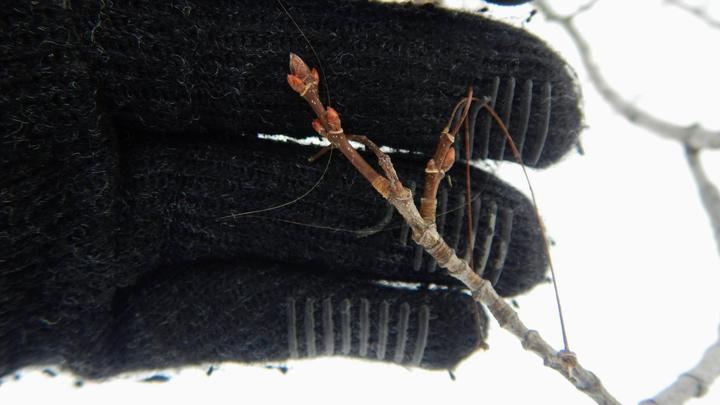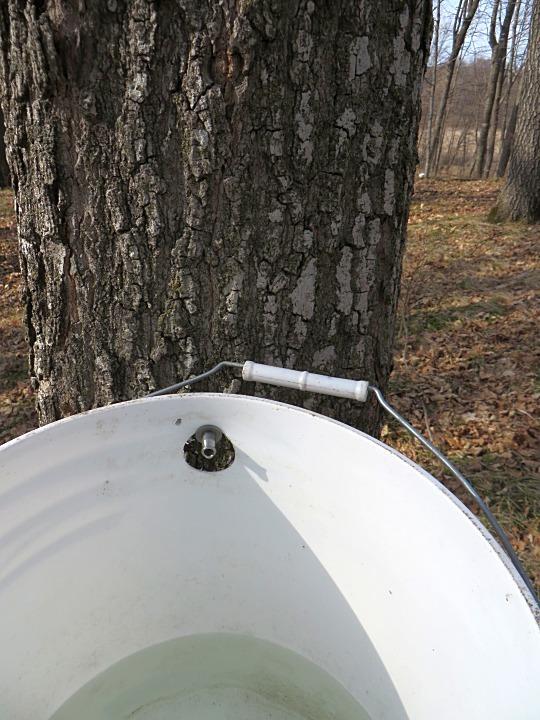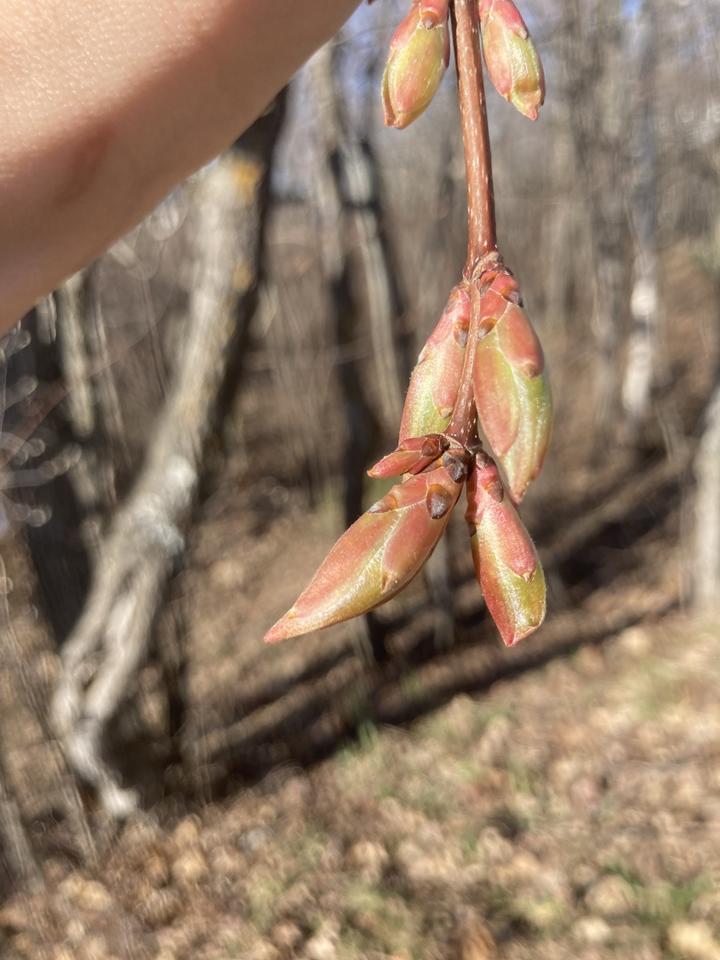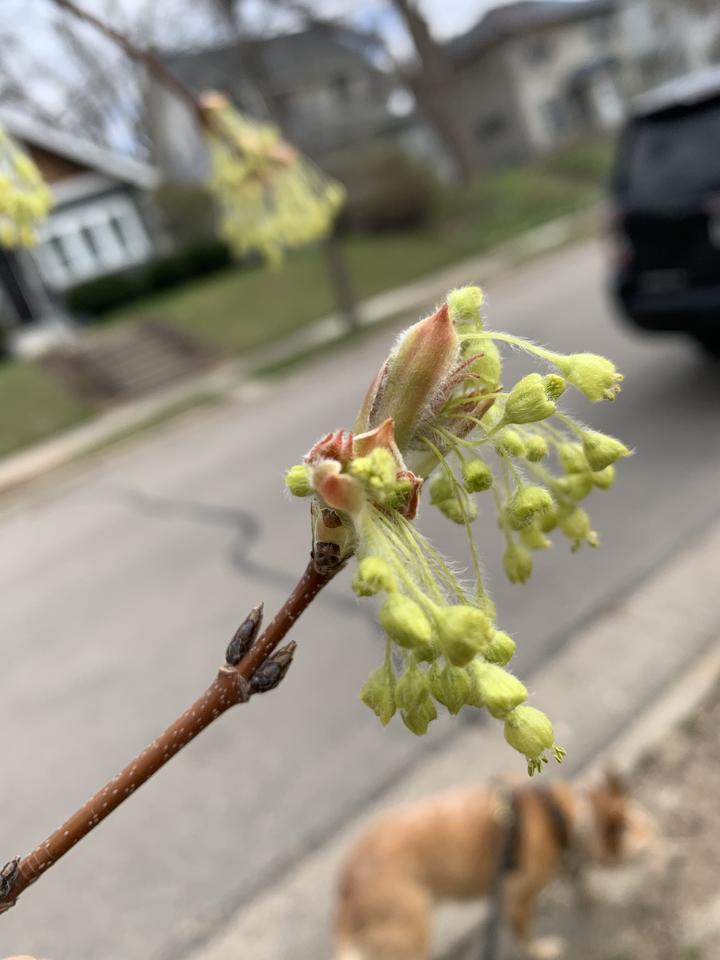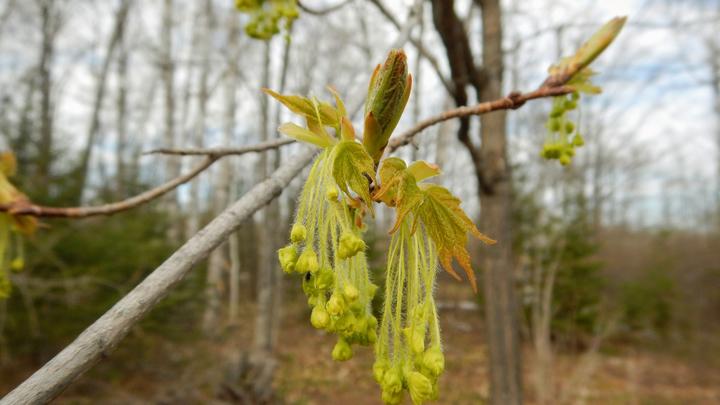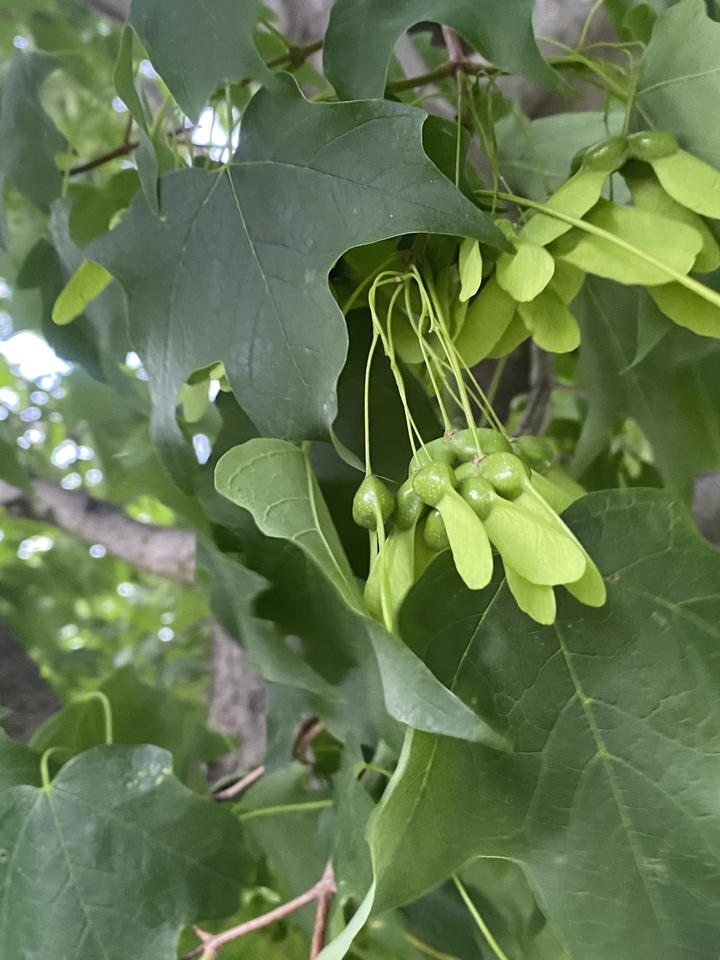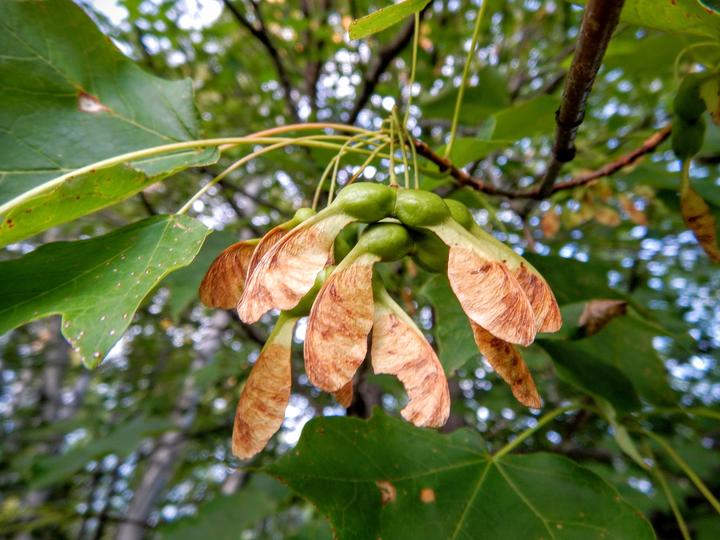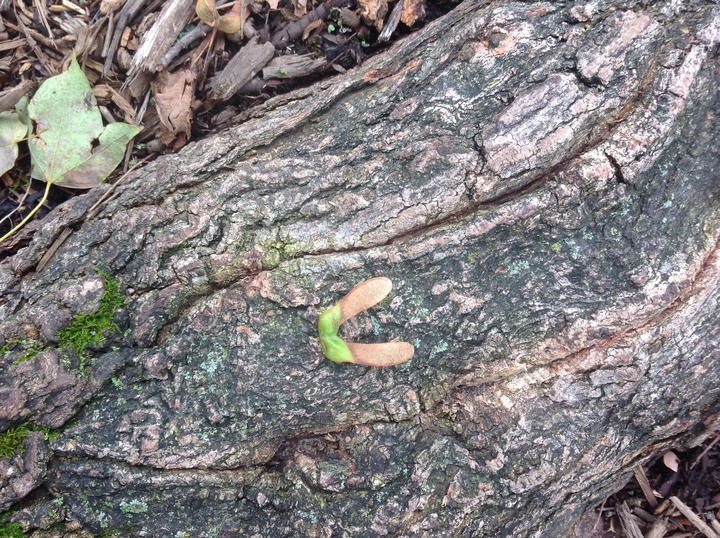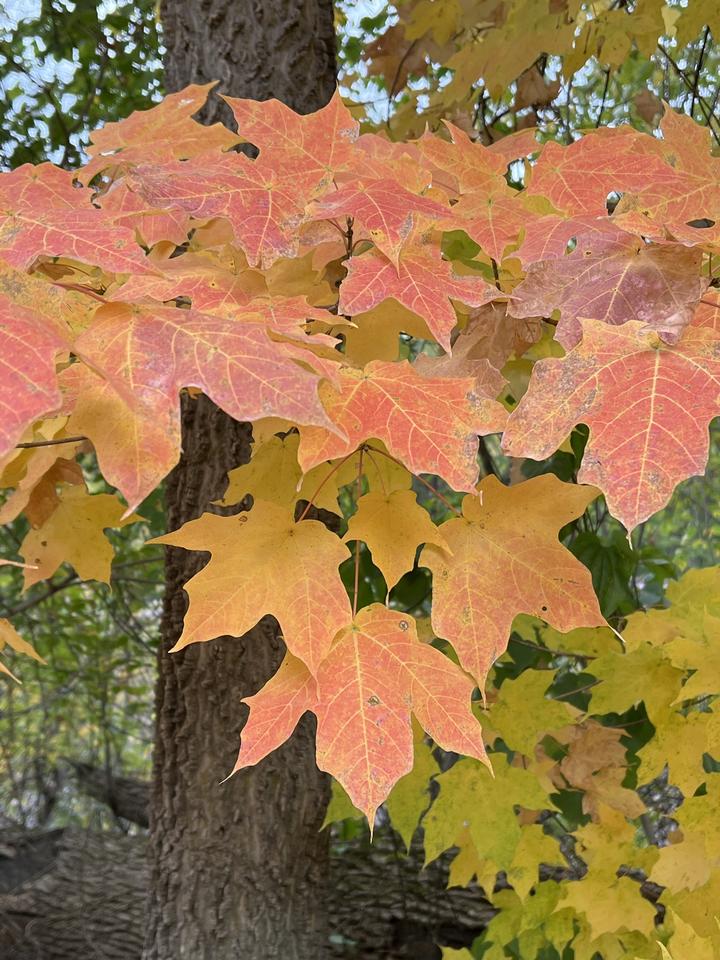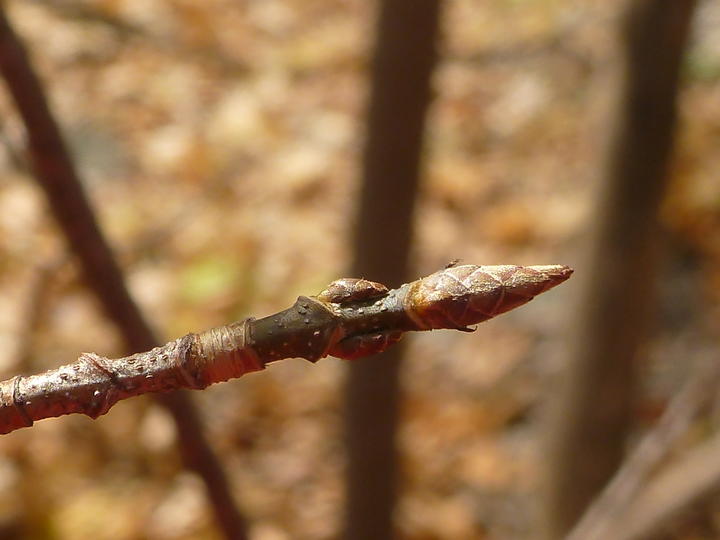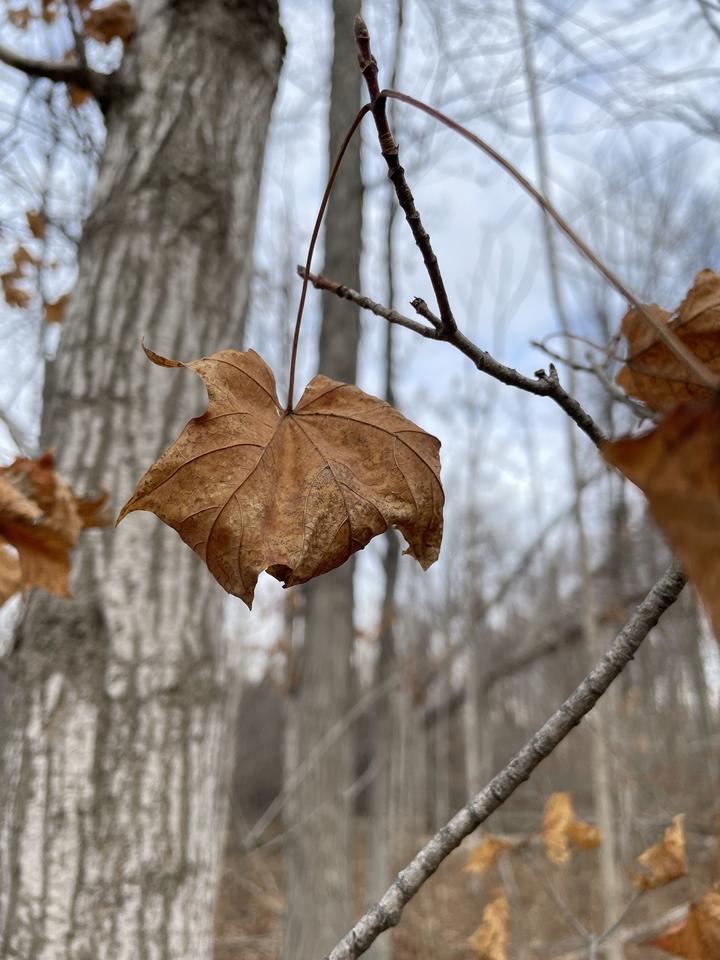More names for this tree
Anishinaabemowin: Ininaatig
The Dakota and Anishinaabe were among the earliest people to name Minnesota’s plants and animals, as well as to understand them in relation to Minnesota’s climate and seasons. Those original names are still in use, and several are included on the Season Watch website. However, complete translations were not available.
Latin (or scientific name): Acer saccharum
The scientific community has a convention of assigning agreed-upon Latin names to every kind of organism. Using scientific names helps people communicate confidently about the same organism and organize lifeforms based on how closely related they are.
Page contents
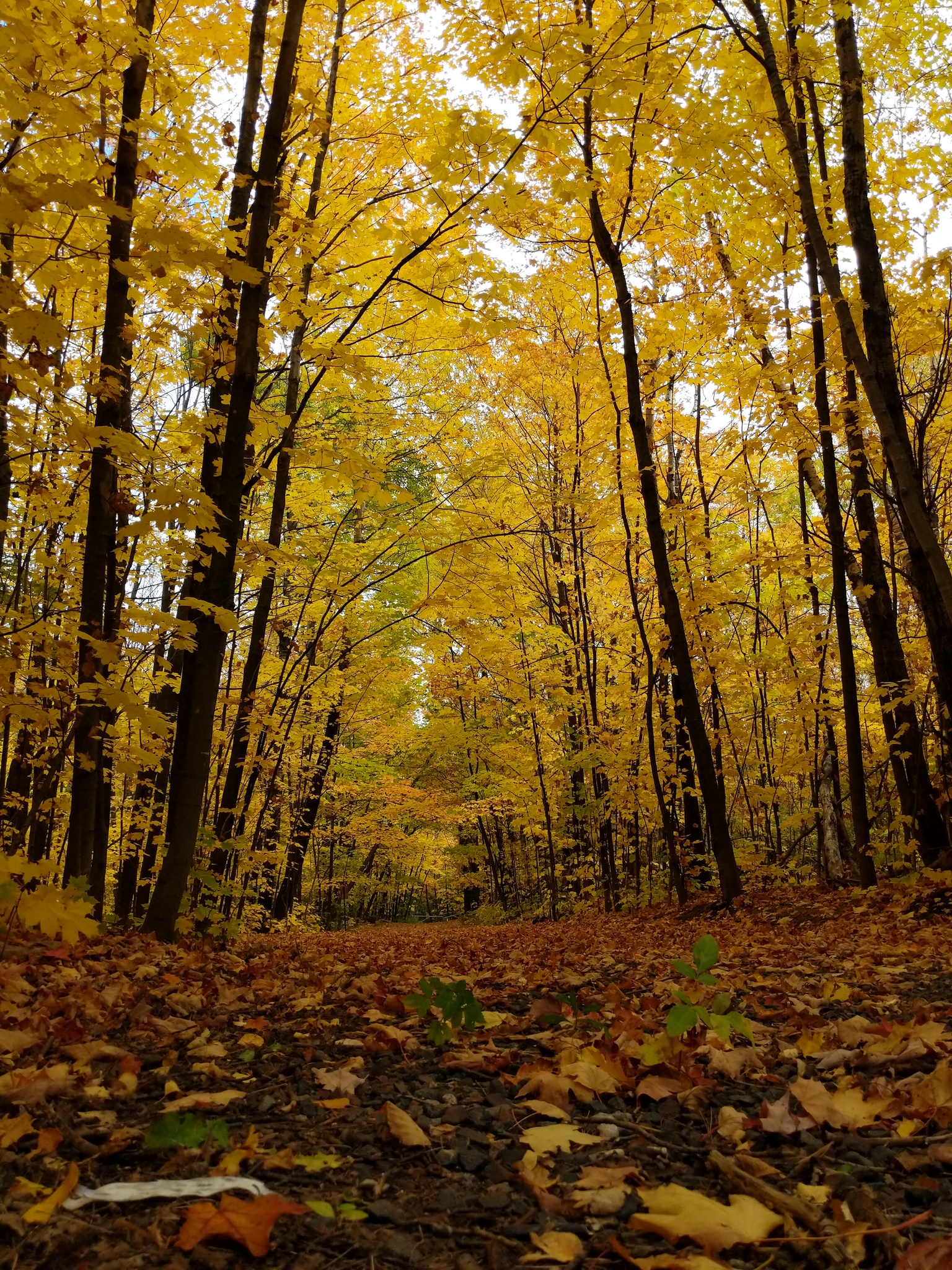
Photo © David, some rights reserved (CC-BY-NC-SA)
iNaturalist observation
About the sugar maple
- Sugar maple are deciduous trees that can grow to eighty feet in height and live up to 400 years.
- When the weather begins to warm in early spring, sugar maples can be tapped to release their sap that can be made into syrup.
- Around April, these trees produce flowers that are primarily pollinated by wind.
- Their seeds are often compared to helicopters because as they drift to the ground, flattened wing-like structures make them spin.
- The sugar maple’s leaves have three to five pointed lobes.
- In fall, their leaves turn bright red, orange or yellow.
- Fun fact: It takes about forty gallons of maple sap to produce one gallon of syrup.
Visual guide to phenology
Watch for the appearance of leaves, flowers, and fruits. Take notice of when flowers open and fruits ripen. In addition to these external changes, sugar maples also undergo an important internal change in early spring: trunks transport sugars from roots to the tip of every branch to support new growth. This hidden change becomes visible (and edible) when people tap trees to make maple syrup.
Note to observers
This page explains general clues to watch for when observing sugar maple phenology. However, this page does not instruct observers on how to identify this plant or collect data in a standardized way.
- For help with identification, see Minnesota Wildflowers.
- For guidance on collecting data, see Nature’s Notebook.
Keep exploring Season Watch
Keep exploring Season Watch
Co-author: Lynsey Nass, Minnesota Master Naturalist
